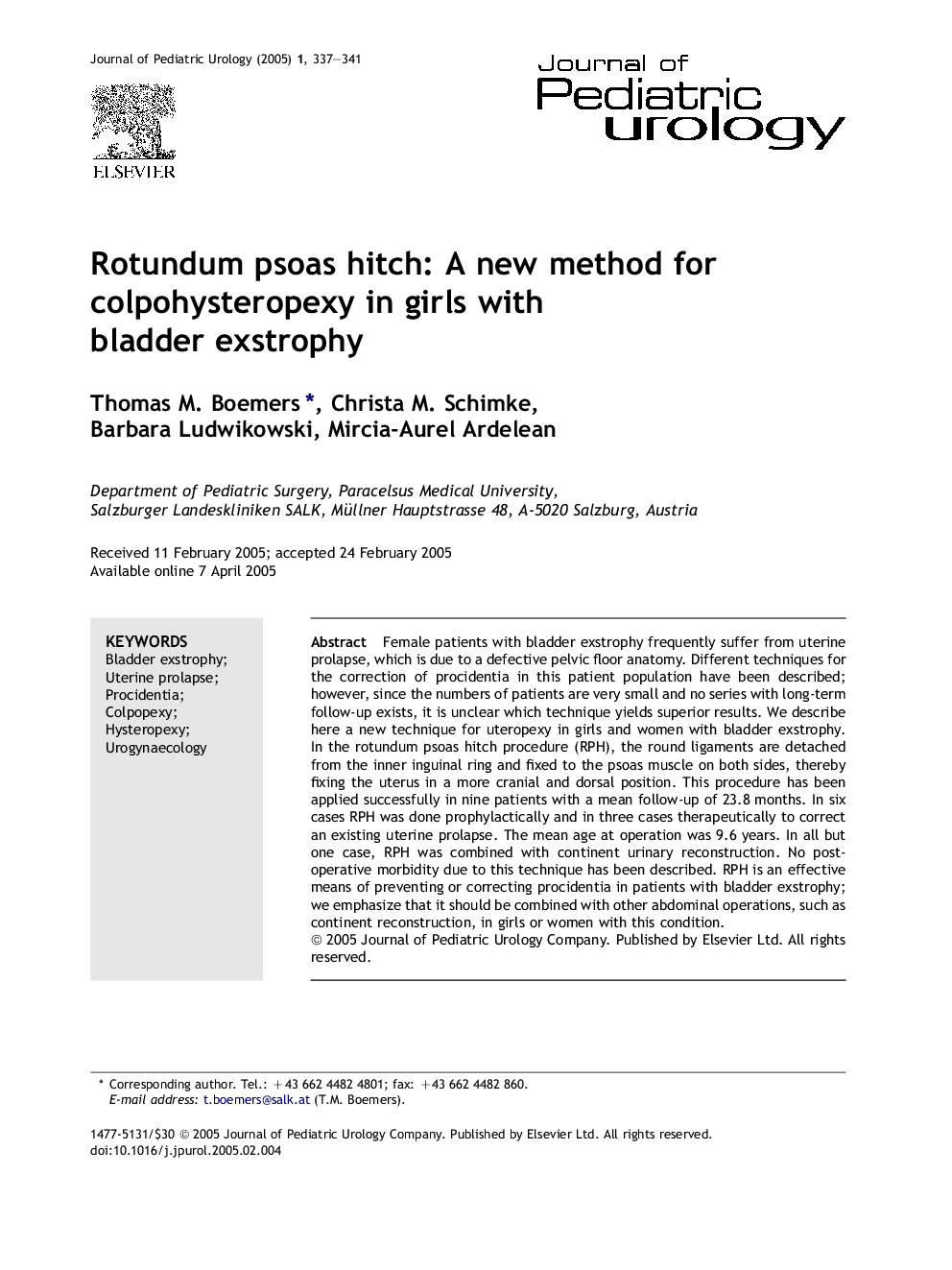| Article ID | Journal | Published Year | Pages | File Type |
|---|---|---|---|---|
| 9375910 | Journal of Pediatric Urology | 2005 | 5 Pages |
Abstract
Female patients with bladder exstrophy frequently suffer from uterine prolapse, which is due to a defective pelvic floor anatomy. Different techniques for the correction of procidentia in this patient population have been described; however, since the numbers of patients are very small and no series with long-term follow-up exists, it is unclear which technique yields superior results. We describe here a new technique for uteropexy in girls and women with bladder exstrophy. In the rotundum psoas hitch procedure (RPH), the round ligaments are detached from the inner inguinal ring and fixed to the psoas muscle on both sides, thereby fixing the uterus in a more cranial and dorsal position. This procedure has been applied successfully in nine patients with a mean follow-up of 23.8 months. In six cases RPH was done prophylactically and in three cases therapeutically to correct an existing uterine prolapse. The mean age at operation was 9.6 years. In all but one case, RPH was combined with continent urinary reconstruction. No postoperative morbidity due to this technique has been described. RPH is an effective means of preventing or correcting procidentia in patients with bladder exstrophy; we emphasize that it should be combined with other abdominal operations, such as continent reconstruction, in girls or women with this condition.
Related Topics
Health Sciences
Medicine and Dentistry
Perinatology, Pediatrics and Child Health
Authors
Thomas M. Boemers, Christa M. Schimke, Barbara Ludwikowski, Mircia-Aurel Ardelean,
